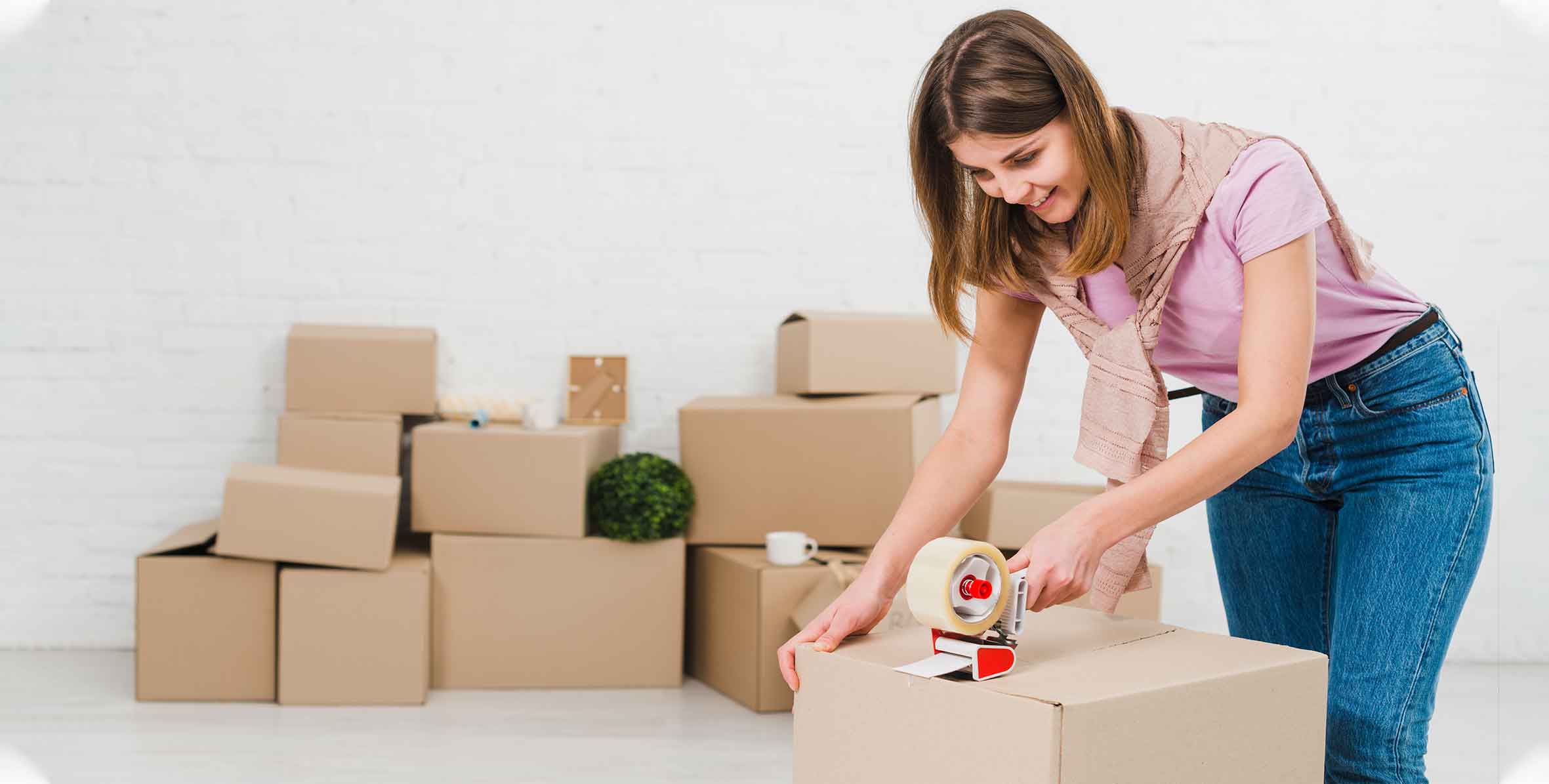Fragile items, as their name suggests, can break or get damaged very easily. This can make packing them a stressful task. These delicate items need special care during packing before you start your move. Simple boxes and padding might not always be enough.
However, knowing good packing methods and adding some extra protection can make a big difference. When you're in a hurry, these breakable items need even more careful handling.
You need to know the right packing tips to move quickly and safely. Using the right packing materials is crucial for protecting fragile items. We will discuss some key tips to pack breakable and fragile items effectively.
Get the Right Tools for Packing
Packing is a time-consuming and overwhelming process. However, the right tools can ease the process with their proper utilization. Inappropriate packing material can damage your valuables. You need the following materials to streamline your packing procedure.
- Durable Boxes: Fragile items require durable boxes to avoid mishaps and damage to belongings during a long-distance move. Boxes are easily available in hardware stores and moving company offices.
- Packing Peanuts: These are affordable packing supplies used to cushion fragile items during moving journeys. Polystyrene peanuts are generally used to fill boxes and add padding for breakable items. They are lightweight and eco-friendly.
- Shredded Paper: These papers are efficient in crowding empty spaces in boxes. You can utilize pre-shredded paper or shred it yourself. The process is a cost-effective way to utilize extra paper.
- Packing Tape: You require good quality tape to seal packing boxes in a secure manner. These tapes are essential in holding boxes together during a long-distance move.
- Labelling Markers: Fragile items should be labelled properly to avoid any confusion while moving. Labelling these boxes with markers can help identify them in case of misidentification.

Did You Know?
When learning how to pack plates for moving, stacking them vertically, like records in a box, reduces the chance of breakage.
Choose the Appropriate Size Boxes
The choice of boxes is instrumental in ensuring the safe transport of your valuables during the moving process. You must choose boxes of the appropriate size that fit your fragile items for safety purposes. Boxes must not be too big or small to avoid free movement or congestion respectively.
While picking the right size box, you need to consider the shape and size, along with the weight of your fragile item. Choose a box that is slightly larger than the breakable item to ease the shipping process and avoid free movement of items. Leave at least two inches of extra space in the box for padding and filling purposes.
Appropriate-sized boxes will provide a necessary foundation on which your packing proceeds. The material quality of boxes, along with their size, is also important to ensure an error-free move.
Use Quality Boxes & Avoid Flimsy Box
No matter how carefully you pack fragile items, using flimsy boxes has a high chance of ruining your efforts. Thin boxes can't hold extra weight and are vulnerable to collapsing during long-distance moves. That's why the material of your box plays a key role in the safe transport of breakable items.
You may want to utilize an old box from the basement. However, worn-out boxes will surely endanger the safety of items. Corrugated cardboard boxes are the most trusted boxes in the packing industry. They have layered paper strengthening their bases to endure extra pressure for heavy items moving.
Prepare Boxes with Essential Packing Supplies
You should prepare boxes with utmost care before initializing the packing process. Add proper padding after reinforcing the bottom of the boxes to prevent any damage to breakable items. You can utilize various packing supplies to reinforce and pad items for ultimate safety.
- Reinforcing Materials: Use packing tapes and extra newspapers to reinforce the bottoms of boxes for extra safety. Add a layer of tape at the bottom to prevent boxes from slipping during the moving journey.
- Bubble Wraps: These packing materials are always fun to pop. However, they also serve as an excellent protective layer for fragile items. The size of the bubble provides extra cushion for breakable items during long-distance moves.
- Packing Papers: Crumbled and shredded papers are ideal for padding fragile items. Packing paper secures the fragile items against scratches during the move.
- Cardboard Dividers: If you’re planning to pack multiple items in a single box, use cardboard dividers to prevent them from bumping into one another. Choose dividers of the appropriate size that fit perfectly in your boxes.
Once you have prepared your boxes, proceed to the actual packing process. For extra safety, utilize different padding and protective cushions.

Did You Know?
When figuring out how to pack dishes for moving, it is crucial to place a layer of padding at the bottom of the box for extra protection.
Tips to Pack Breakable Items Safely
A proper packing method can help you avoid any stress during the move. Using safe packing techniques will ensure your breakable items reach your destination without any damage. Follow the below-mentioned steps to ensure safe packing of fragile items:
Wrap the Breakable Items
You should wrap some old newspaper around these items for the first layer of safety. After that, secure the paper with some packing tape. Add an extra layer of bubble wrap for additional cushion.
Box up the Items
Fragile items should be packed in separate boxes to avoid them colliding with each other. Place the item in the appropriate size box and fill the empty space with shredded paper or packing peanuts to provide a safe transport environment.
Apply these techniques to be on the safe side in case of any accident or mishap during the moving journey. These packing tips are lifesavers in case of emergencies.
Put Heavy Items in Small Boxes
Small boxes are generally better for moving heavy items to balance the load of packed boxes. Boxes generally of the size one and a half cubic feet are ideal for larger items. Larger boxes will weigh extra when you place heavy objects in them.
You should choose small wooden or plastic boxes for extra protection from breakable items. Buy heavy-duty shipping boxes that can hold enough weight for a smooth move. You can also buy special boxes, including dish boxes and picture boxes, to hold these items in an efficient manner. Follow these effective dish-packing tips for the effective transport of items.
Pack Fragile Items Individually
Fragile items are vulnerable to scratches and damage when placed in the same box. Even cardboard dividers fail to prevent the impact occasionally. It is advisable to avoid using dividers and packing fragile items in individual boxes to ensure complete safety during the moving journey.
To avoid mishaps, we add an extra layer of cushions and seal the boxes with packing tape. Individual packing and padding are our solution to provide foolproof safety.
Seal the Boxes Tightly
After packing all your fragile valuables, ensure the box is tightly sealed with packing tape. Double-check the boxes to find any weak spots and fix them with some more tape. Use specialized ribbons and strings to add extra safety features. Sealing the boxes can help avoid breaking the pieces in case of an accident.
Label the Fragile Items
Labelling is important to avoid confusing fragile items with ordinary boxes. Use bold markers to clearly mention Fragile Boxes, Handle Carefully. Labeling boxes makes it easy to identify breakable items and ensure their safety.
You can also write target locations such as Kitchen or Bathroom to give movers direct carrying directions. This kind of labelling prevents frequent shifting of fragile items.
Things to Avoid While Packing Breakable Items
We have mentioned all the necessary tips to pack fragile items efficiently. If you've acclimatized yourself with all the Dos of packing, here are some things to avoid while packing breakable items for your long-distance move.
- Using Flimsy Boxes: You should strictly avoid using flimsy boxes to carry fragile items. They are vulnerable to breakage in case of extra pressure. Instead, utilize sturdy boxes for safe and effective movement.
- Over-Packing: It is possible that you may become over-cautious while packing your valuable items. Only use suitable packing for optimized and cost-effective moves.
- Packing in Oversized Boxes: Fragile items should be packed in appropriately sized boxes, mostly smaller ones, to avoid any extra weight during transportation. However, boxes should fit the size of your belongings to avoid clustering of items.
- Focusing Too Much on Professionalism: While packing your valuable breakables, it is likely to get caught up in too much professionalism. You may want to be extra careful while packing. However, remember to keep other factors like budget and time in mind.






